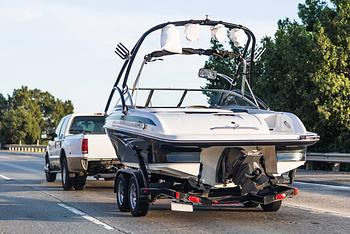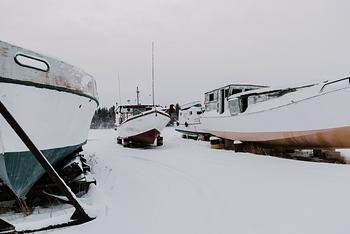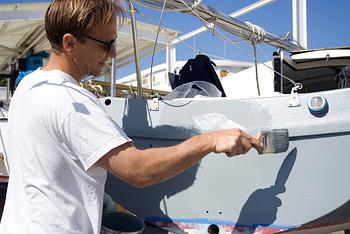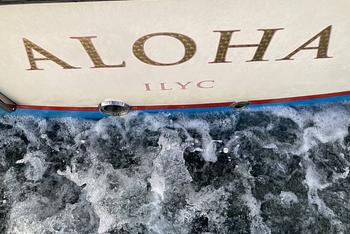When it comes to boat ownership, preventing your boat from sinking is most likely your very top concern. Or is it? In fact, according to the Boat Owners Association of the United States, most boat sinkings are preventable. While it’s possible to encounter any number of poor sea conditions, from inclement weather, to large waves and other natural phenomenon, most boat sinkings ultimately come down to poor maintenance and upkeep, cutting safety corners or poor judgement.
So, How to stop your vessel from sinking? Know how here ...
Stay on Top of Maintenance
Inspect your boat frequently, and ensure that regular maintenance is carried out according to manufacturer’s guidelines. Corrosion and mechanical problems do occur, so be sure to check for leaks and damage and however small they may seem, don’t ignore them. When you consider that more than two-thirds of recreational-boat sinking happen at the dock or on a mooring it is vital you take all necessary precautions.
Be sure to:
-
Use marine-grade parts for maintenance and repairs to avoid premature corrosion.
-
Make sure any reconfiguring of your boat doesn’t exceed design weight capacities or overpower the vessel.
-
Consult with qualified marine technicians before undertaking any repairs yourself.
-
Get into the habit of conducting regular inspections before you set off from the dock and on your return. By being familiar with how everything should look and operate, you will spot faults more quickly. These include inspecting hoses, bellow and hull penetrations.
-
Don’t rely on the bilge pump to keep water out of your boat. Always ensure you keep on top of any water ingress, and repair the issue rather than relying on the bilge pump to do the work for you.
-
When overwintering your boat, don’t cut corners, especially in areas where temperatures get below freezing. Water freezing in hoses below the waterline, strainer baskets and through-hull valves can cause a lot of damage. Likewise, batteries often run down during winter which will mean the bilge pump won’t work if water does get in. Regular visits are imperative during winter, and can prevent many sinkings.
-
Even when it’s brand new, a boat is full of holes. OK, so they’re pre-fabricated holes, but nevertheless, water doesn’t argue about how it can into your boat. Do regular checks on all below-the-waterline fittings and connections, including drain plugs, mounting bolts, transducers, sensors, through-hull valves and other items. Over time vibration, thermal cycling and corrosion can loosen clamps and bolts and even cause structural cracks around fittings, all of which can result in leaks.
-
Sterndrives, and particularly bellows, account for a high percentage of sinking related to parts failures. Age, deterioration and marine growth all cause the rubber to break down and the seal to be ineffective. Conduct regular inspections and an annual haul-out for removal of marine growth, and you can avoid being one of the statistics.
-
Maintain safe dock line management systems. By not keeping your dock lines in good condition, you are putting your boat at risk of sinking. If the tide drops and your lines get snagged, your boat could end up stuck under the dock and fill with water when the tide comes back in.
Safety at Sea
You’ve done all your maintenance and minimized risks to your boat when it’s on the dock, so now it’s time to focus on safety at sea. Human error account for the majority of boat sinking at sea that aren’t mechanical failures, so keep your wits about you, know your limits and have a safety plan in place.
Things to consider are:
-
Keep a proper lookout, as one of the main causes of boat sinking is a collision, whether that’s with a stationary object or another boat. You would be amazed at how even the shortest of distractions can have disastrous consequences. One of the main considerations is alcohol, as impaired ability and judgement can cause serious accidents. As a responsible captain you should be abstaining from any alcohol while manning your boat.
-
Poor weather, from fog to wind and waves can cause boats to capsize, collide and even sink. Be sure you do a thorough check of the weather conditions before setting off, and know your limitations as a sailor.
-
It is also important to understand the tides and currents, and make a written note of them, so you can plan your sea time. Some areas will become impassable at low tide, so you need to know where you’re going and what time you need to be back to prevent issues arising.
-
Use charts, maps or a navigation system to be familiar with the undersea landscape so that you can look out for hazards and depths of water. Striking submerged rocks, a wreck or a sandbank can cause a huge amount of damage and quickly sink a boat. If you’re in unfamiliar waters, keep your speed low and ask passengers to keep a lookout for obstacles.
-
While most sailors are concerned with the water under the boat, spare a moment to consider what coming from above. Heavy rain entering an open hatch can quickly accumulate and overwhelm the bilge. Ensure not only that hatches are closed when underway, but that the seals and gaskets are watertight and well maintained.
-
Be sure to have a means of communicating with emergency services on your boat. This might be a VHF radio, satellite communications or even a mobile phone for in-shore sailing (although the latter can have poor signal). Be aware of your location at all times so that you can tell emergency responders where you are if you get into distress.
Know what to do if the Unthinkable Happens?
In very rare instances, and despite all the best preparations, the unthinkable can happen. If your boat starts to take on water or capsizes it is up to you as captain to ensure that everyone on board gets off safely.
-
The most important first step is to ensure all passengers are wearing a life jacket, as this may be the only chance of surviving an accident until emergency crews reach you. On smaller vessels and sailboats they should be worn all the time. When cruising on larger vessels, passengers should know where life vests are stored, and you must ensure they all put them on immediately. A safety briefing when passengers board is crucial, and could save precious minutes in an accident.
-
Call MAYDAY on your VHF immediately, and summon help. The quicker the emergency services can get to you, the better. Give them all the information they need to locate you in a calm and clear voice.
-
In general, the bigger the craft you are on the safer you will be. So don’t abandon ship to life rafts too soon. You should only do this if and when your boat is starting to go under, and you can’t do anything more to stop it.
At Rightboat.com we always want everyone to have a fun and safe boating experience, and put you in touch with some of the best brokers and marinas on the market who can advise you on all things safety and maintenance. Be sure to check download our Guide to Buying a Boat for more in-depth advice on boat ownership.
You May also like ...
- A Beginner’s Guide on How to Get into Sailing?
- How to Make Your Boat Pay for Itself?
- How to Charter a Boat ?
- How to Create a Dazzling Boat Interior?
- How to Take Boat Photos and Videos?
- How to Get the Most Out of Your Yacht Charter?
Related Articles and Guides
29th Mar 2024
How to Transport Your Boat Four Different Ways
18th Oct 2023
How to Winterize a Boat: Steps, Checklist and Costs
20th Sep 2023
Painting a Fiberglass Boat: A Detailed Guide
19th Sep 2023






